
Fiber is an essential component of a healthy diet, playing a critical role in maintaining digestive health, stabilizing blood sugar levels, and aiding in weight management. High-fiber foods are particularly beneficial as they provide a range of nutrients and can help reduce the risk of various chronic diseases. This article will explore 30 high-fiber foods, highlighting their nutritional benefits and how to incorporate them into your diet.
Including high-fiber foods in your daily meals can significantly improve your overall health. Foods such as beans, lentils, and peas are excellent sources of fiber and can be easily added to soups, salads, and main dishes. Additionally, fruits like apples, berries, and pears, as well as vegetables like broccoli, carrots are rich in fiber and can be consumed as snacks or side dishes.
Another great way to boost your fiber intake is by choosing high-fiber foods for breakfast. Options like oatmeal, chia seeds, and whole grain cereals not only provide fiber but also keep you full and energized throughout the morning. For lunch and dinner, consider adding high-fiber foods like quinoa, barley, and brown rice to your meals. These grains can be used as a base for salads, stir-fries, or as a side dish to your main course.
Snacking on high-fiber foods such as nuts, seeds, and dried fruits can also help you meet your daily fiber needs. These snacks are not only convenient but also packed with essential vitamins and minerals. Incorporating a variety of high-fiber foods into your diet ensures you get a wide range of nutrients while keeping your digestive system healthy.
Let’s dive into the world of high-fiber foods and discover the best options to boost your fiber intake.
High-Fiber Foods
1.Chia seeds

Chia seeds are a powerhouse of nutrients and an excellent source of fiber. An ounce (28 grams) of chia seeds contains 10.6 grams of fiber. These tiny seeds are also rich in omega-3 fatty acids, antioxidants, and various essential minerals such as calcium, magnesium, and phosphorus. They can be added to smoothies, yogurt, or baked goods for an easy fiber boost. When soaked in liquid, chia seeds expand and form a gel-like consistency, making them a great addition to puddings and overnight oats. This unique property not only enhances their nutritional value but also helps in maintaining hydration.
2. Lentils

Lentils are a flexible legume suitable for soups, stews, salads, and various dishes. A cup of cooked lentils provides roughly 15.6 grams of fiber. They are also rich in protein, making them an excellent choice for vegetarians and vegans. Lentils come in various types, including green, red, yellow, and black, each with slightly different flavors and cooking times. They are also packed with iron, folate, and manganese, contributing to overall health and well-being. Incorporating lentils into your diet can help support heart health, manage blood sugar levels, and improve digestive health.
3. Black Beans

Black beans are another legume packed with fiber. One cup of cooked black beans offers 15 grams of fiber. They are also high in protein, making them a great plant-based protein source. Black beans are high in antioxidants, especially anthocyanins, which help reduce oxidative stress in the body. They are also an excellent source of folate, iron, magnesium, and potassium. Black beans can be used in a variety of dishes, including soups, salads, and Mexican cuisine, providing not only fiber but also a hearty and satisfying texture.
4.Quinoa

Quinoa is a whole grain that is not only high-fiber food but also a complete protein, containing all nine essential amino acids. One cup of cooked quinoa provides 5.2 grams of fiber. Quinoa is also rich in vitamins and minerals, including magnesium, potassium, zinc, and B vitamins. Its nutty flavor and fluffy texture make it a versatile addition to many dishes. It can be used as a base for salads, bowls, or as a side dish, and can be easily incorporated into breakfast, lunch, or dinner. Quinoa is also gluten-free, making it suitable for those with gluten intolerance or celiac disease.
5.Avocados
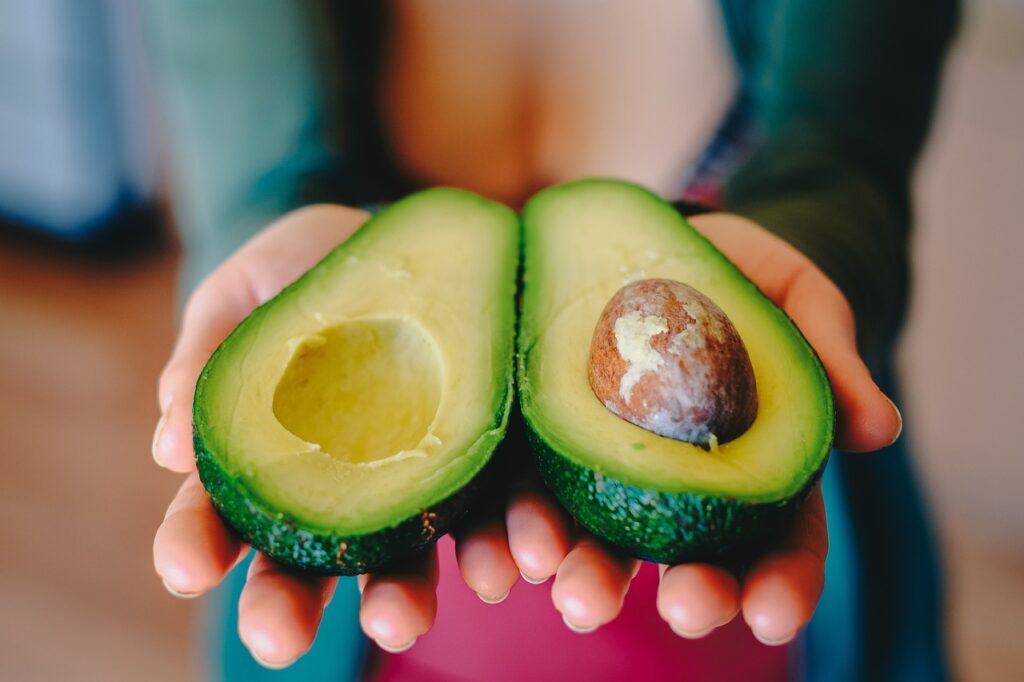
Avocados are known for their healthy fats, but they are also high-fiber foods. A medium avocado has approximately 10 grams of fiber. In addition to fiber, avocados are rich in monounsaturated fats, which are heart-healthy and can help lower bad cholesterol levels. They also provide a good amount of vitamins C, E, K, and several B vitamins, as well as potassium, which is essential for blood pressure regulation. Avocados can be added to salads, sandwiches, or made into guacamole for a delicious fiber boost. Their smooth texture and subtle flavor make them a versatile ingredient for both savory and sweet recipes.
6. Almonds

Almonds are a nutritious snack that is high-fiber food. An ounce of almonds (roughly 23 nuts) offers 3.5 grams of fiber. They are also a good source of healthy fats, protein, vitamin E, magnesium, and antioxidants. Almonds can be eaten on their own as a snack, added to salads or yogurt, or used in baking. They also make a great base for almond butter or almond milk. Incorporating almonds into your diet can help support heart health, improve blood sugar control, and aid in weight management.
7. Oats

Oats are a classic breakfast option that is rich in fiber. One cup of cooked oatmeal contains 4 grams of fiber, including a specific type of soluble fiber called beta-glucan. Beta-glucan helps lower cholesterol levels and supports heart health. Oats are also a good source of manganese, phosphorus, magnesium, and iron. They can be enjoyed in various forms, including oatmeal, overnight oats, and granola. Oats are also used in baking to add texture and nutritional value to cookies, muffins, and bread. They can be flavored with fruits, nuts, and spices to create a variety of delicious and nutritious meal
8. Sweet potatoes

Sweet potatoes are a delicious and nutritious vegetable that is high in fiber. A medium sweet potato with the skin on delivers 4 grams of fiber. They are also rich in beta-carotene, which the body converts to vitamin A, essential for vision, immune function, and skin health. Sweet potatoes are also a good source of vitamin C, manganese, and potassium. They can be baked, roasted, or mashed as a side dish, or used in soups, stews, and casseroles. Their natural sweetness makes them a flexible ingredient for both savory and sweet dishes.
9. Raspberries

Raspberries are one of the highest-fiber fruits. A cup of raspberries provides 8 grams of fiber. They are also rich in antioxidants, particularly vitamin C and quercetin, which help protect against oxidative stress and inflammation. Raspberries provide a good amount of vitamins K and E, as well as folate and manganese. They can be enjoyed fresh, added to yogurt, or used in desserts. Raspberries are also great in smoothies, salads, and as a topping for cereal or oatmeal. Their vibrant color and sweet-tart flavor make them a popular choice for many dishes.
10. Brussels sprouts

Brussels sprouts are a fiber-rich cruciferous vegetable. One cup of cooked Brussels sprouts provides 4 grams of fiber. They are also high in vitamins C and K, folate, and antioxidants. Brussels sprouts contain compounds that may help protect against certain types of cancer and support detoxification processes in the body. They can be roasted, steamed, or sautéed as a nutritious side dish. Brussels sprouts can also be shredded and added to salads or used in casseroles. Their slightly bitter flavor is complemented by roasting or adding flavorful seasonings.
11. Chickpeas
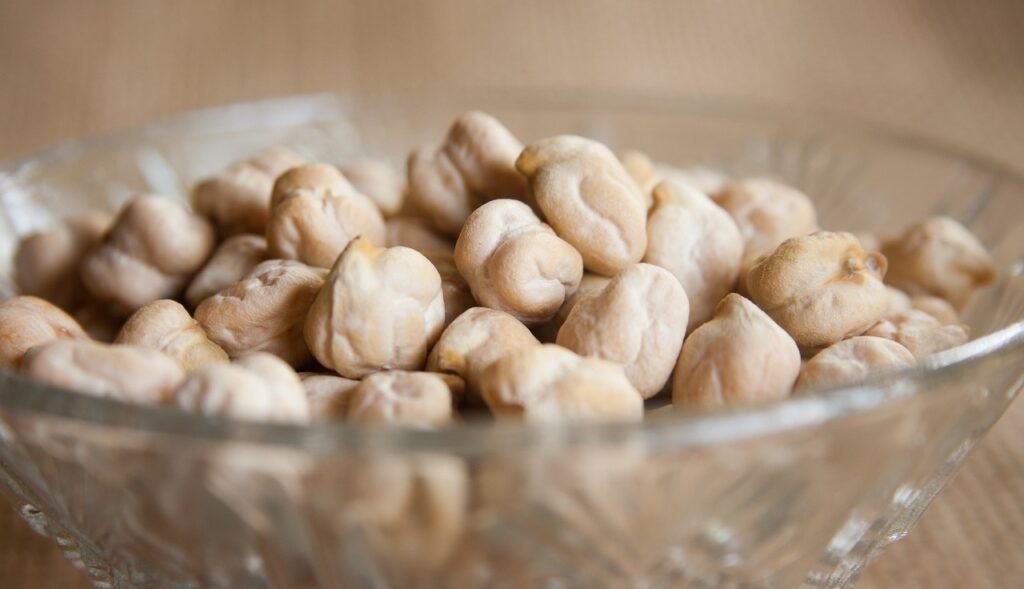
Chickpeas, also known as garbanzo beans, are a versatile legume high in fiber. One cup of cooked chickpeas contains 12.5 grams of fiber. They are also a good source of protein, iron, phosphorus, and folate. Chickpeas can be used in salads, soups, and stews, or to make hummus and falafel. They can also be roasted to make a crunchy snack. Chickpeas are a staple in many cuisines, including Middle Eastern, Mediterranean, and Indian, providing both flavor and nutritional benefits.
12. Pears

Pears are a sweet, juicy fruit that is rich in fiber. One medium pear contains 6 grams of fiber. They are also a good source of vitamin C, potassium, and antioxidants. Pears can be enjoyed fresh, in salads, or as a dessert. They can also be baked, poached, or used in smoothies. Pears are available in various varieties, each with a unique flavor and texture. They are a versatile fruit that can be used in both sweet and savory dishes.
13. Flaxseeds

Flaxseeds are tiny seeds that are incredibly high in fiber. One tablespoon of whole flaxseeds contains 2.8 grams of fiber. They are also a rich source of omega-3 fatty acids, lignans, and various essential minerals. Flaxseeds can be incorporated into smoothies, oatmeal, or baked goods. They can also be used as an egg substitute in vegan baking by mixing with water to form a gel-like consistency. Flaxseeds support digestive health, heart health, and hormonal balance. For optimal nutrient absorption, it’s best to consume ground flaxseeds rather than whole.
14. Apples

Apples are a popular fruit that is also high in fiber. One medium apple with skin provides 4.4 grams of fiber. They are also an excellent source of vitamin C and various antioxidants. Apples can be eaten fresh, added to salads, or baked into desserts. They are available in many varieties, each with a unique flavor and texture. Apples can also be used to make applesauce, cider, and apple butter. Their natural sweetness and crunch make them a satisfying and nutritious snack.
15. Carrots

Carrots are a crunchy vegetable that is high in fiber. One cup of raw carrots contains 3.6 grams of fiber. They are also rich in beta-carotene, which the body converts to vitamin A, essential for vision, immune function, and skin health. Carrots are a great source of vitamin K, potassium, and antioxidants. They can be enjoyed as a snack, in salads, or cooked in various dishes. Carrots can be roasted, steamed, or added to soups and stews. Their natural sweetness makes them a versatile ingredient for both savory and sweet dishes.
16. Broccoli

Broccoli is a cruciferous vegetable recognized for its high fiber content. One cup of cooked broccoli contains 5 grams of fiber. It is also rich in vitamins C and K, folate, and various antioxidants. Broccoli contains compounds that may help protect against certain types of cancer and support detoxification processes in the body. It can be steamed, roasted, or added to stir-fries. Broccoli can also be enjoyed raw in salads or with dips. Its slightly bitter flavor is complemented by roasting or adding flavorful seasonings.
17. Barley

Barley is a fiber-rich whole grain. A cup of cooked barley contains 6 grams of fiber. It is also a good source of vitamins and minerals, including manganese, selenium, and magnesium. Barley is particularly high in beta-glucan, a type of soluble fiber that helps lower cholesterol levels and supports heart health. It can be used in soups, salads, or as a side dish. Barley can also be used in baking to add texture and nutritional value to bread and muffins. Its nutty flavor and chewy texture make it a versatile grain for many dishes.
18. Artichokes

Artichokes are a unique vegetable that is very high in fiber. One medium artichoke contains 7 grams of fiber. They are also a good source of vitamin C, folate, magnesium, and antioxidants. Artichokes contain compounds that may support liver health and improve digestion. They can be steamed, grilled, or used in dips. Artichokes can also be stuffed or added to salads and pasta dishes. Their tender leaves and heart provide a delicious and nutritious addition to various meals.
19. Edamame

Edamame, or young soybeans, are a high-fiber food/snack. One cup of cooked edamame provides 8 grams of fiber. They are also a good source of protein, iron, calcium, and various vitamins. Edamame can be enjoyed on their own, in salads, or added to stir-fries. They are commonly served as a snack or appetizer in Japanese cuisine. Edamame is a versatile and nutritious legume that can be incorporated into various dishes.
20. Split Peas

Split peas are a type of legume that is very high in fiber. One cup of cooked split peas contains 16.3 grams of fiber. They are also an excellent source of protein, iron, and folate. Split peas are commonly used in soups and stews, providing a hearty and nutritious addition to these dishes. They can also be used to make split pea puree or added to salads. Split peas support digestive health, heart health, and blood sugar control.
21. Figs

Figs are a sweet fruit that is high in fiber. One cup of dried figs contains 14.6 grams of fiber. They are also a good source of vitamins and minerals, including vitamin B6, copper, and potassium. Figs can be enjoyed fresh, dried, or added to desserts. They can also be used in baking to add natural sweetness and texture to cakes, cookies, and bread. Figs are a flexible fruit that can be incorporated into both sweet and savory recipes
22. Bananas
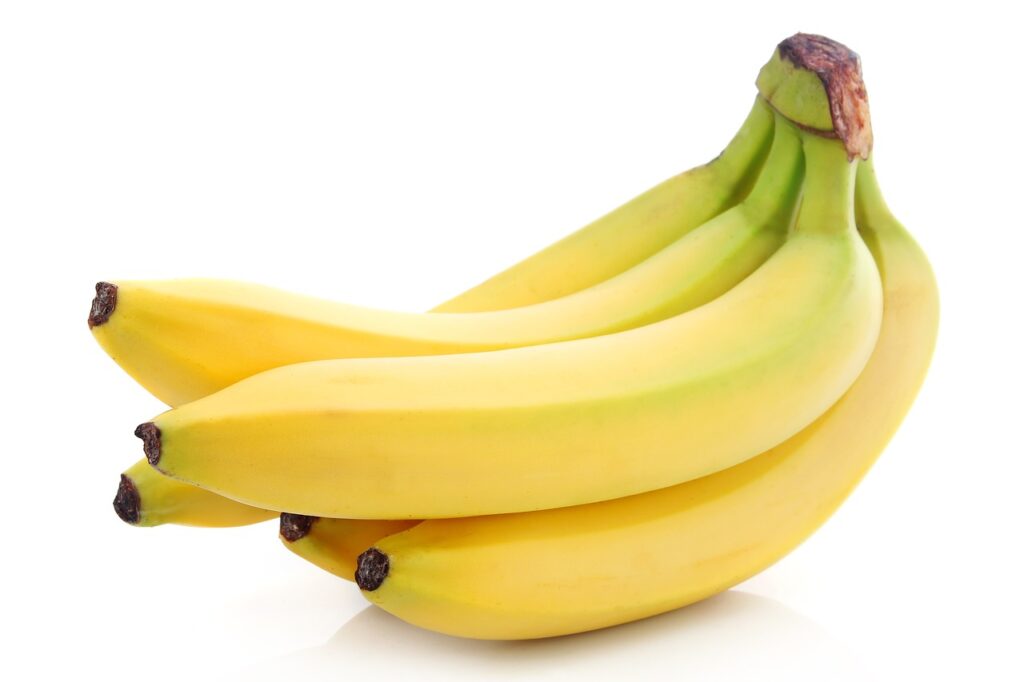
Bananas are a convenient and nutritious fruit that is high in fiber. One medium banana contains 3.1 grams of fiber. Figs are rich in vitamin C, vitamin B6, and potassium. Bananas are versatile, perfect for eating plain, blending into smoothies, or baking. They are a popular choice for a quick and healthy snack. Bananas can also be used to make banana bread, muffins, and pancakes. Their natural sweetness and creamy texture make them a versatile ingredient in many dishes.
23. Pumpkin
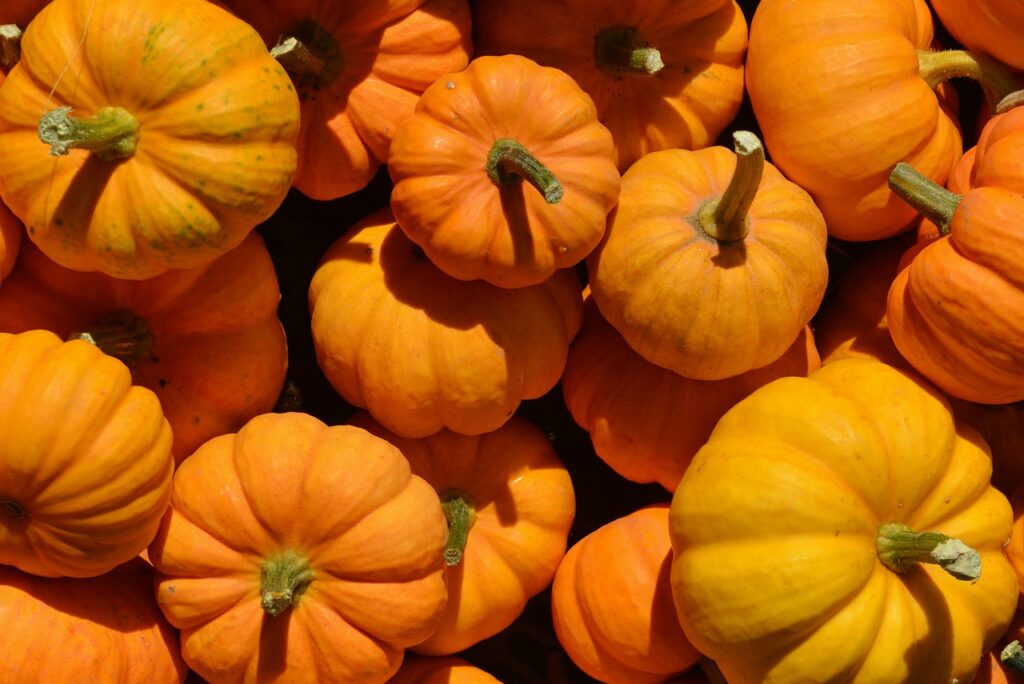
Pumpkin is a nutritious vegetable that is high in fiber. One cup of cooked pumpkin contains 7.1 grams of fiber. It is also rich in beta-carotene, which the body converts to vitamin A, essential for vision, immune function, and skin health. Pumpkin is also a good source of vitamin C, potassium, and antioxidants. It can be used in soups, pies, and baked goods. Pumpkin can also be roasted, pureed, or added to pasta dishes. Its natural sweetness makes it a versatile ingredient in both savory and sweet dishes.
24.Blackberries

Blackberries are another high-fiber fruit. One cup of blackberries contains 7.6 grams of fiber. They are also rich in antioxidants, particularly vitamin C and anthocyanins, which help protect against oxidative stress and inflammation. Blackberries provide a good amount of vitamins K and E, as well as folate and manganese. They can be enjoyed fresh, in yogurt, or as part of desserts. Blackberries are also great in smoothies, salads, and as a topping for cereal or oatmeal. Their vibrant color and sweet-tart flavor make them a popular choice for many dishes.
25. Pistachios

Pistachios are a crunchy and nutritious snack that is high in fiber. One ounce (about 49 nuts) provides 3 grams of fiber. They are also a good source of healthy fats, protein, vitamin B6, and antioxidants. Pistachios can be eaten on their own as a snack, added to salads or yogurt, or used in baking. They are also used to make pistachio butter and can be added to various dishes for a crunchy texture and nutritional boost. Incorporating pistachios into your diet can help support heart health, improve blood sugar control, and aid in weight management.
26. Kale

Kale is a leafy green vegetable that is very high in fiber. One cup of cooked kale contains 2.6 grams of fiber. It is also rich in vitamins A, C, and K, as well as antioxidants and various minerals. Kale can be used in salads, soups, or as a side dish. It can also be added to smoothies or used to make kale chips. Kale is a versatile and nutritious vegetable that can be incorporated into various dishes. Its slightly bitter flavor is complemented by roasting or adding flavorful dressings.
27. Brown Rice

Brown rice is a whole grain that offers a high fiber content, with one cup of cooked brown rice providing 3.5 grams of fiber. It is also a good source of magnesium, phosphorus, and selenium. Brown rice can be used as a base for bowls, in stir-fries, or as a side dish. It is a versatile grain that can be incorporated into various dishes, providing a chewy texture and nutty flavor.
28. Oranges

Oranges are a juicy and sweet fruit that is high in fiber. One medium orange contains 3.1 grams of fiber. They are also a good source of vitamin C, folate, and various antioxidants. Oranges can be eaten fresh, juiced, or added to salads. They can also be used to make orange zest, which adds flavor to various dishes. Oranges are a popular choice for a quick and healthy snack. Their natural sweetness
29. Peas
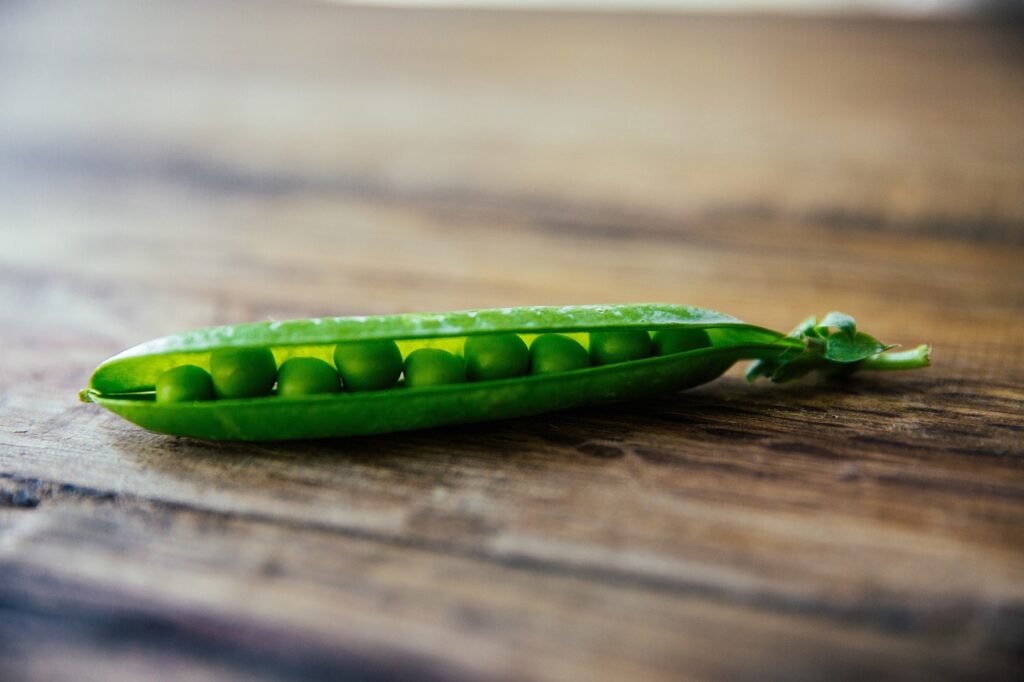
Peas are a versatile vegetable that is include in high-fiber foods. One cup of cooked green peas contains 8.8 grams of fiber. They can be used in soups, salads, or as a side dish.
30. Popcorn
Popcorn is a fantastic snack that belongs to the category of high fiber foods. As a whole grain, popcorn is not only delicious but also packed with dietary fiber, which is essential for digestive health. Including popcorn in your diet can help you meet your daily fiber requirements. High fiber foods like popcorn aid in maintaining a healthy weight by promoting a feeling of fullness. Additionally, these foods support heart health and reduce the risk of various chronic diseases. Enjoying a bowl of popcorn is an easy and enjoyable way to incorporate more high fiber foods into your diet.
Benefits of High-Fiber Foods
Including high-fiber foods in your diet provides a range of health benefits
Improved Digestive Health
Fiber increases stool bulk, aiding in the prevention of constipation and supporting regular bowel movements. It also supports a healthy gut microbiome by serving as a food source for beneficial bacteria.
Blood Sugar Control
High-fiber foods help slow the absorption of sugar, which can prevent blood sugar spikes and improve overall blood sugar control. This is particularly beneficial for individuals with diabetes.
Heart health
High-fiber foods can help lower cholesterol levels, particularly LDL (bad) cholesterol, reducing the risk of heart disease. Fiber also helps regulate blood pressure and reduces inflammation.
Weight management
High-fiber foods are more filling and can help control appetite, leading to reduced calorie intake and aiding in weight management. They also help maintain stable energy levels throughout the day.
Cancer prevention
Some studies suggest that a diet high-fiber foods, particularly from fruits and vegetables, may reduce the risk of certain types of cancer, including colorectal cancer.
How to Incorporate High-Fiber Foods into Your Diet
Here are some suggestions to help you boost your fiber intake:
Start Your Day with Fiber
Begin your day with a high-fiber breakfast such as oatmeal topped with fruits and nuts, or a smoothie with chia seeds and leafy greens.
Choose Whole Grains
Choose whole grains such as brown rice, quinoa, and whole wheat bread instead of refined grains. These options are higher in fiber and more nutritious.
Snack on Fruits and Vegetables
Keep high-fiber fruits and vegetables handy for snacks. Carrots, apples, berries, and nuts are great options that provide a fiber boost.
Add Legumes to meals
Incorporate beans, lentils, and chickpeas into soups, salads, and main dishes. They provide an excellent source of fiber and protein.
Include fiber-rich sides
Add a side of high-fiber foods to your meals, such as a salad with leafy greens, roasted Brussels sprouts, or a serving of sweet potato.
Experiment with new Recipes
Try new recipes that include high-fiber foods. Explore dishes from different cuisines that feature legumes, whole grains, and fiber-rich vegetables.
Read Nutrition Labels
When shopping, check the nutrition labels for fiber content. Choose products that are high in fiber to ensure you are getting enough in your diet.
To follow our recipes click here
Conclusion
High-fiber foods are an essential part of a healthy diet, offering a range of benefits from improved digestion to reduced risk of chronic diseases. By incorporating a variety of high-fiber foods into your meals and snacks, you can easily meet your daily fiber needs and enjoy the numerous health advantages they provide. Remember to introduce fiber gradually into your diet and drink plenty of water to help your body adjust. With these 30 high-fiber foods, you’ll be well on your way to better health and wellness.



